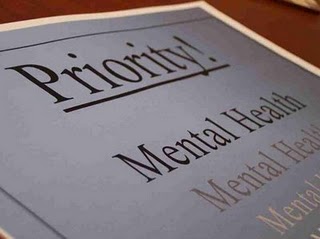Mental Health Parity Law -Is It Effective After Three Years?

It has been three years since the mental health parity law went into effect, but, according to a recent GAO (Government Accountability Office) report, there has been little change in the percentage of employers that offer mental health coverage. The law requires employers make mental health benefits as comprehensive as those for medical and surgical treatments. Plus the report found little evidence that mental health utilization has increased despite the fact that the law eradicated restrictions such as limitations on outpatient visits.
Before the Mental Health Parity and Addiction Equity Act of 2008 became law, many feared that it would lead to skyrocketing health coverage costs and that some employers might drop mental health benefits altogether to avoid complying with the law. GAO’s results indicate those fears were largely unsubstantiated. According to a survey it conducted, 96% of employers that offered mental health benefits in 2008 continued to do so in their current plan year, while only 2% cut coverage.
It seems that the removal of limits and changing copays doesn’t translate into more and more people going to behavioral health clinic. There are obstacles to overcome in order for people to become comfortable using these services. Some of those hurdles include the stigma associated with mental illness and the fact that the value of counseling is sometimes unrecognized.
The greatest impact of the 2008 law has been the removal of limits on office visits and inpatient days. And the reform law will expand coverage to more Americans beginning in 2014, and will include mental health as an essential benefit. While that will more than likely cause some rise in mental health utilization, it usually takes two to three years for the impact to be fully felt. However, in states where public mental health services were cut, there could be some bottled up demand in the beginning, but that is expected to level off also.
The fact that utilization has not gone up is likely due to plan designs and the law’s relatively recent implementation. Employees who are enrolled in an open-access plan — such as a PPO or account-based product — have a choice between using participating or nonparticipating providers, and they may be more likely to seek services.
A more appropriate survey might have been to see how much utilization and expenditures have changed since 1996, when the first federal mental health parity law went into effect. In fact, since 2008, cost sharing for mental health benefits hasn’t changed much. For example, in 2008, the average mental health office visit copay and coinsurance were, respectively, $25 and 21%. In the 2011 plan year, the figures are $26 and 19%.
It appears that most employers did not drop mental health coverage, possibly because they have come to recognize the importance of mental health in the overall well-being of their work force. Behavioral health conditions left untreated often result in increased medical costs, reduced productivity, increased absences, and higher accident and error rates.
Despite the parity law, some employers are trying to control mental health spend and utilization. In fact, for many employer-sponsored health plans, an outside company is often hired to manage mental health benefits, which includes doing preauthorization to make sure treatments are medically necessary.
And while the law eliminated most cost controls, some restrictions still remain, such as excluding certain diagnoses from coverage or certain treatments for covered conditions (e.g., alternative medicine), and limiting levels of care, such as residential treatment centers.
Since utilization of mental health services hasn’t increased since the mental health parity law took effect, more changes are likely necessary. For instance, better explanation of the law so employees more fully understand it, more education around mental health disorders to improve awareness, and increased coordination between medical and behavioral health services which will lead to greater access to quality care.





